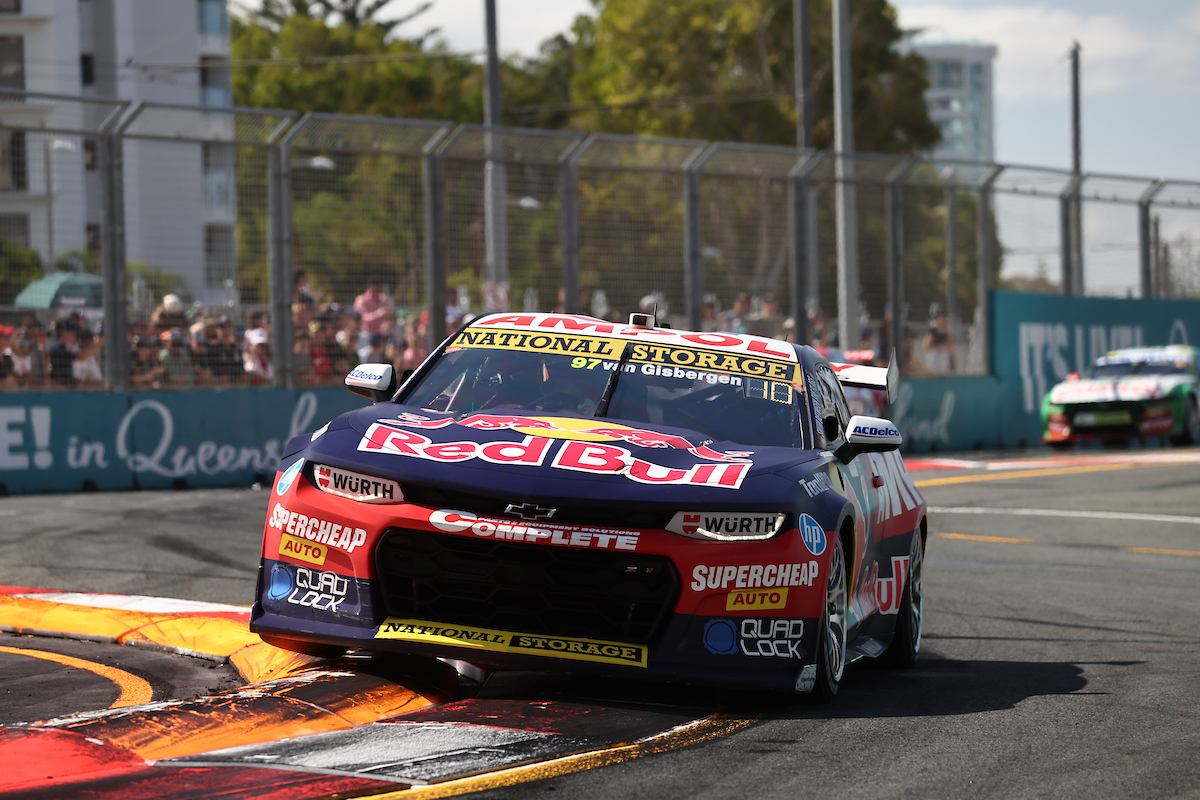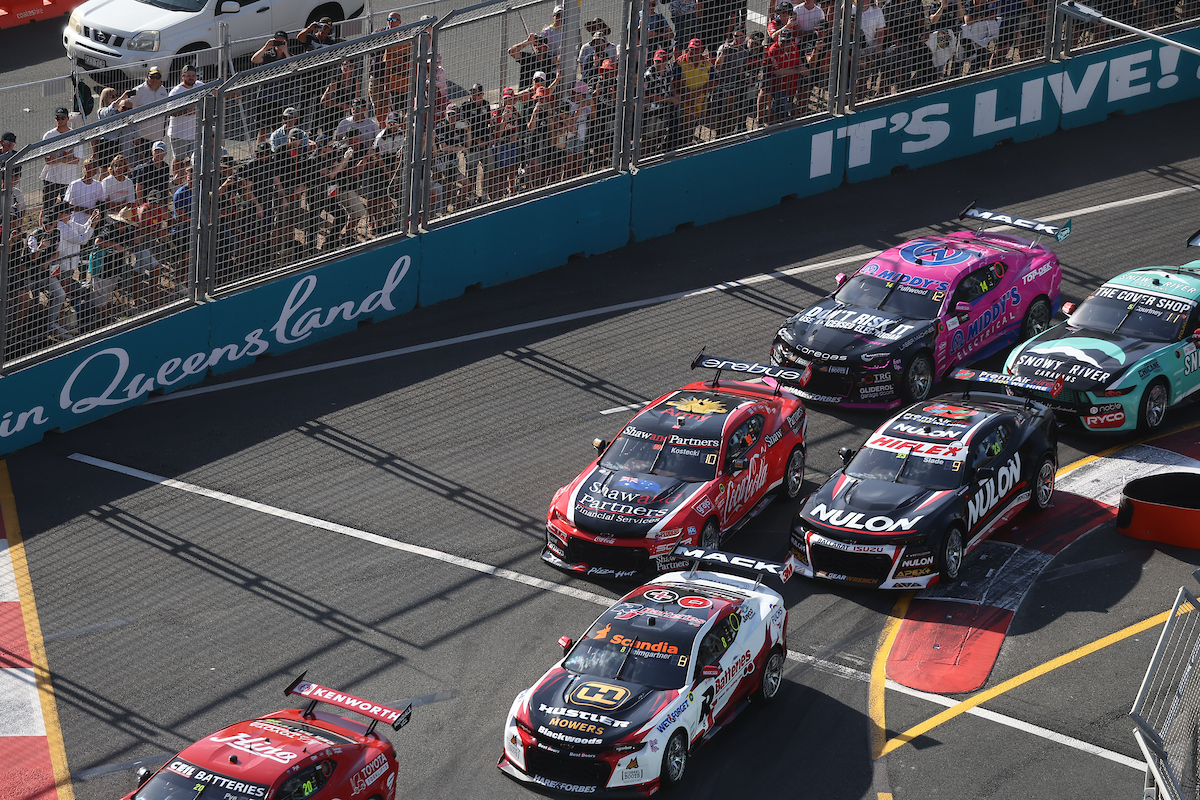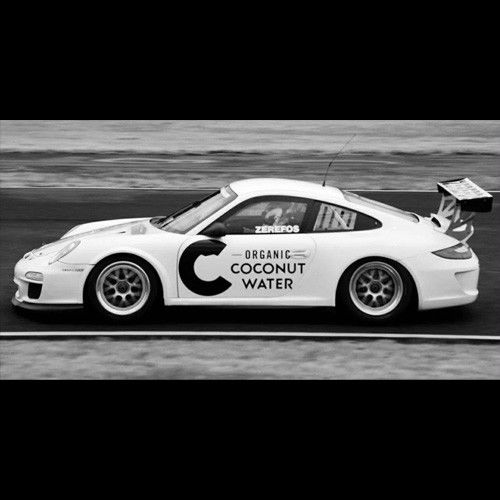

There was some cracking Supercars racing on the Gold Coast at the weekend. Very close finishes underlined the intensity of the duels that were a feature of the latter part of both races.
Unfortunately, the viewing experience was dominated, to its detriment, by the continual talk of kerb strikes, warnings, and resultant penalties.
I’ve said it before, and I’ll say it again. To me, the Gen3 cars look and sound awesome. That was apparent again on the streets of the Gold Coast. The pictures were excellent, and the backdrop was as amazing as always.
Yes, there was some processional racing at times, but there was actually a fair bit of action up and down the field overall. Those tight wins for both Waters and Reynolds were superb to watch. I was on the edge of my seat as, I’d suggest, was any real enthusiast regardless of allegiance.
However, and it’s a big however, the issue of the kerbs and track limits at this venue needs to be dealt with once and for all.
There’s absolutely no point in shooting the messenger over this. By that I mean the individuals in Race Control. They were doing their best to deliver a fair competition.
But what happened last weekend, with the vast majority of cars getting kerb strike warnings and 12 different drivers getting five-second penalties (or more) over the course of the two races, isn’t desirable or sustainable.
And it was bloody painful having to listen to all the commentator chat on the subject.
There’s only body that is responsible for this, and that’s the same body that now has to deliver a much better outcome for 2024, namely the Motorsport Operations department of Supercars Australia.
They need to deal with the root cause of the issue, and that’s the track design.
This isn’t news to them. Various, well-credentialled, people have been offering their input on this for quite some time.
The original Surfers Paradise circuit was 50 percent longer than today’s 2.96 km version. The character was also different, with the long straights to and from the heart of Surfers.
It was designed for IndyCars. Supercars were only there in a support role until 2009. The shorter circuit came about in 2010 to reduce costs and local disruption. It also became a necessity, in later years, to accommodate the Light Rail.
The short track still maintains many elements of the north end of the original circuit; some good, some not so good.
But the areas that need changing are the pit straight chicane (along with the unnecessarily dangerous pit exit) and the Beach chicane. These are hangovers from the days of IndyCars where breaches were self-policing as too much kerb equalled too much car damage.
Given that Supercar drivers and teams have always tried as hard as possible to ride kerbs, even at permanent circuits such as Sandown, as that equates to lap time, our ‘kangaroos’, as I referred to them last week, cannot be relied upon to create self-policing racing on the Gold Coast chicanes.
Hence the call for a track rethink.
There’s more than enough space around both the first chicane and the Beach one to come up with solutions that not only remove the incentive for excessive kerb use, but also create better racing with more potential overtaking places.
The current track layout makes it very difficult to pass unless the overtaking car has a significant tyre advantage. There’s an over-reliance on either hopping the kerb deliberately at Turn 2 in order to try to pass someone into Turn 4 or waiting for an error into the left-hander at the end of the beachside section of track. Those chances apart, it’s pretty much down to waiting for tyre differential to come into play and thereby getting better drive off Turn 4 or the final corner.

If the Motorsport Department at Supercars isn’t capable of creating a revised design for next year, then the only alternative is to be entirely transparent with the kerb strikes and short cuts during the races, as is the case in practice and qualifying.
Put the issue firmly in the hands of the teams and drivers with a set amount of strikes before penalties kick in. This policy is used in MotoGP where everyone knows where they stand, and the policy is clearly described on their website for all to see.
But that solution would, to me, be a crying shame. The fans deserve better. Give us a revised design with new passing opportunities please and, at the same time, that should get rid of the total preoccupation of the television commentary team with kerb strikes. The average viewer couldn’t care less. They want to watch great racing where what they see is what they get. Waiting for penalties to be dished out to half the field isn’t what’s needed.
The other subject worthy of note from the weekend, is the issue of refuelling.
Watching the cars stationary in pit lane for such an inordinate amount of time waiting for the minimum drop is as dull as ditchwater. Moreover, it really doesn’t work at shorter circuits such as Surfers. It’s not good having almost everyone being lapped at some point or another. Even with the position numbers on the windscreens, it’s massively confusing to watch.
The first question in resolving this is; does the category even need a minimum drop? It was introduced because of large variations in fuel economy between different models some years ago. If the Ford and Chevy are close enough today, then drop it.
Reduce the tank size to 80 litres (or whatever) for 250km races and, for Adelaide, have no other rules. Teams can then decide how to strategise. At the same time, keep a requirement for two stops for at least two tyres per stop. I’m not trying to create a particular solution here – I’m just throwing ideas out for different scenarios to try to get away from the predictability and boredom of the pit stops last weekend.
Spice it up! I don’t want to be told by the commentators exactly where a car is going to drop back into the race after a pit stop. Where’s the unpredictability? Where’s the jeopardy?
There’s a month to come up with great refuelling regulations (hopefully as few as possible) for the Adelaide 500, and a year to come up with a revised track design for the Surfers Paradise circuit.
Let’s see what the Motorsport Operations department comes up with on both counts.



















